#Bootstrap 4 Tutorial for Beginners
Explore tagged Tumblr posts
Text
Bootstrap 4 Tutorial for Beginners: Learn the Basics of Responsive Web Development
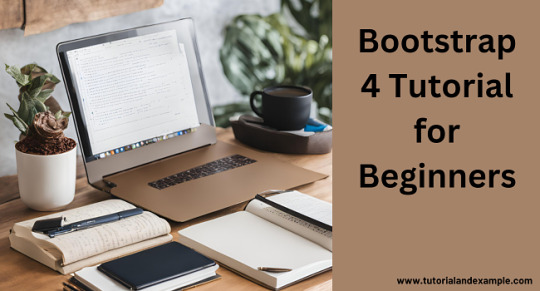
If you’re new to web design and development, Bootstrap 4 is the perfect tool to help you get started. It’s a free, open-source framework that makes creating responsive and visually appealing websites quick and easy. With Bootstrap 4, you don’t need advanced coding skills – the framework does the heavy lifting for you!
One of the standout features of Bootstrap 4 is its grid system, which allows you to create layouts that adapt beautifully to different screen sizes. Whether you’re building a website for desktops, tablets, or smartphones, Bootstrap ensures your content looks great everywhere.
Bootstrap 4 also includes a wide variety of components, such as navigation bars, buttons, modals, and forms. These pre-designed elements save you time and effort, allowing you to focus on customizing the look and feel of your website.
Another reason Bootstrap 4 is ideal for beginners is its built-in utilities, which make styling easier. With simple classes, you can adjust spacing, alignment, colors, and more without writing complex CSS.
Getting started with Bootstrap 4 is simple. All you need is basic HTML knowledge, and you’re ready to dive in. Many online tutorials and resources are available to guide you step by step.
If you’re ready to create stunning, responsive websites, explore more with the Bootstrap Tutorial for Beginners at Tutorial and Example. Happy learning!
0 notes
Text
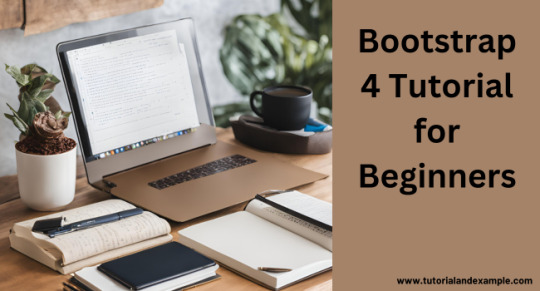
Boost your web design skills with our Bootstrap 4 tutorial for beginners! Learn to create responsive, professional websites easily using Bootstrap's grid, components, and utilities. Perfect for aspiring developers and designers. Start your journey today!
0 notes
Text
Mastering Web Development: A Comprehensive Guide for Beginners
In the vast landscape of technology, web development stands as a crucial cornerstone. It encompasses the art and science of building websites, ranging from simple static pages to complex web applications. Whether you're aiming to pursue a career in software development or seeking to enhance your digital presence, understanding web development is essential.
In this comprehensive guide, we'll take you through the fundamental concepts and practical skills needed to master web development from scratch. Let's dive in!
1. Understanding HTML (Hypertext Markup Language)
HTML serves as the backbone of every web page, providing the structure and content. It uses tags to define different elements such as headings, paragraphs, images, and links. By mastering HTML, you'll be able to create well-structured and semantically meaningful web documents.
2. Exploring CSS (Cascading Style Sheets)
CSS is the language used to style HTML elements, enhancing their appearance and layout. With CSS, you can customize colors, fonts, spacing, and more, giving your website a polished and professional look. Understanding CSS selectors and properties is essential for effective styling.
3. Introduction to JavaScript
JavaScript is a versatile programming language that adds interactivity and dynamic behavior to web pages. From simple animations to complex web applications, JavaScript powers a wide range of functionalities. Learning JavaScript fundamentals such as variables, functions, and events is crucial for web development.
4. Building Responsive Websites
In today's mobile-centric world, it's essential to create websites that adapt seamlessly to various screen sizes and devices. Responsive web design achieves this by using fluid grids, flexible images, and media queries. Mastering responsive design principles ensures that your websites look great on desktops, tablets, and smartphones.
5. Introduction to Version Control with Git
Git is a powerful tool for tracking changes in your codebase and collaborating with other developers. By learning Git basics such as branching, merging, and committing, you can streamline your development workflow and effectively manage project versions.
6. Introduction to Front-End Frameworks
Front-end frameworks like Bootstrap, Foundation, and Materialise provide pre-designed components and stylesheets to expedite web development. By leveraging these frameworks, you can create responsive and visually appealing websites with less effort and code.
7. Introduction to Back-End Development
While front-end development focuses on the user interface, back-end development deals with server-side logic and database management. Learning back-end languages such as Node.js, Python, or PHP enables you to build dynamic web applications and handle user interactions efficiently.
8. Deploying Your Website
Once you've developed your website, it's time to make it accessible to the world. Deploying a website involves selecting a web hosting provider, uploading your files, and configuring domain settings. Understanding the deployment process ensures that your website goes live smoothly.
9. Conclusion and Next Steps
Congratulations on completing this comprehensive guide to mastering web development! By now, you've gained a solid understanding of HTML, CSS, JavaScript, version control, frameworks, and deployment. As you continue your journey in web development, remember to stay curious, practice regularly, and explore advanced topics to further refine your skills.
Resources for Further Learning:
Online tutorials and documentation
Interactive coding platforms
Community forums and discussion groups
Next Steps:
Explore advanced topics such as web performance optimization, server-side rendering, and progressive web apps.
Build real-world projects to apply your skills and showcase your portfolio.
Stay updated with the latest trends and technologies in web development through blogs, podcasts, and conferences.
With dedication and perseverance, you'll continue to evolve as a proficient web developer, creating innovative solutions and contributing to the ever-changing digital landscape . Happy coding!
4 notes
·
View notes
Text
How to Begin Your Web Design Journey: A Step-by-Step Guide in Simple Terms
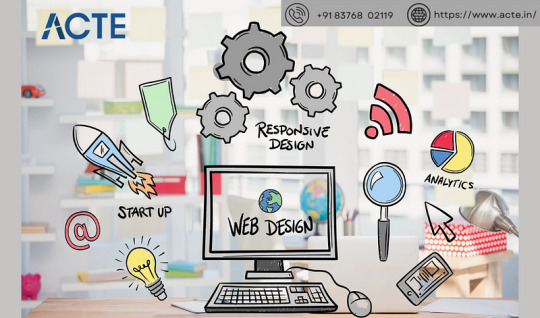
Understanding the Basics:
Learn about HTML, which is like a web page’s skeleton.
Understand CSS, which is like makeup for web pages.
Know how to make websites look good on different screens.
2. Choose your tools:
Start with simple text editors like Notepad (for Windows) or TextEdit (for Mac).
Later, try fancier editors like Visual Studio Code.
For making pictures, try Adobe Photoshop or Illustrator.
3. Learn HTML and CSS:
Use websites like W3Schools or Codecademy.
If you want to learn more about web design with certification and placement, ACTE Institute offers comprehensive machine learning training courses that can give you the knowledge and skills necessary to excel in this field. Consider the infinite possibilities for data analysis, automation, and decision-making that machine learning may create.
YouTube: There are many video tutorials covering HTML and CSS for beginners.
They teach you how to make web pages and make them look nice.
You can also learn from courses on Coursera or edX.
4. Practice your skills.
Besides learning, make simple web pages to get better.
Try harder projects as you get more confident.
Make your own website to practice lots.
5. Responsive Web Design:
Make sure your websites work well on phones and computers.
Learn about media queries (they help your design fit different screens).
6. Master CSS Layouts:
Get really good at arranging web stuff using CSS (like making boxes and arranging them nicely).
7. Web Design Frameworks:
Think about using ready-made kits like Bootstrap.
They have pre-made pieces to help you design faster.
8. UI/UX Design:
Learn to make websites easy to use and nice to look at.
Think about how people will use your site.
9. Web Hosting and Domain:
To show your website to people, you need a place to put it (hosting) and a name for it (domain).
Lots of companies can help with this, like Bluehost or HostGator.
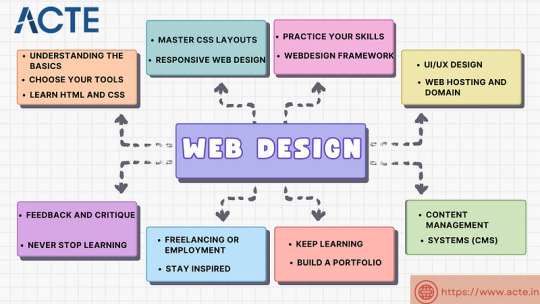
10. Content Management Systems (CMS):
Consider using tools like WordPress to manage your website easily.
11. Keep Learning:
Web design keeps changing, so keep learning new stuff.
Read blogs, watch webinars, and take more advanced classes.
12. Build a portfolio.
Make a collection of your best work to show others.
People who might hire you want to see what you can do.
13. Freelancing or employment:
Decide if you want to work alone or with a company.
Both ways have good things and not-so-good things, so pick what you like.
14. Networking:
Join groups of web designers to meet others like you.
Learning from others can help you become better.
15. Feedback and criticism:
Don’t be shy to ask for advice on your work.
When people give you tips, it helps you improve.
16. Launch your projects:
When you’re good enough, work on real websites.
Offer to make websites for friends or local businesses.
17. Stay Inspired:
Be creative and get ideas from different places.
Nature, art, and other designers can help you think of cool stuff.
18. Never Stop Learning:
Web design always changes, so keep learning new things.
Stay curious and open to learning more tricks and tools.
The secret to success in web design is to start with the fundamentals and gradually advance your abilities. Keep in mind that on this trip, patience and practice are the keys to success. As your skills advance, you’ll have the imagination needed to realise your ideas for websites. So put your hands in your pockets, launch your preferred coding editor, and start your web design experience!
4 notes
·
View notes
Text
What Is Web Development? A Beginner’s Guide to Building Websites
In the modern digital era, websites are essential for businesses, organizations and individuals to showcase their presence online. Behind every functional and visually appealing website lies a process called web development. But what exactly is web development, and how can beginners get started with building their own websites? This guide will break down the fundamentals of web development and provide a roadmap for anyone interested in creating their first site.
What Is Web Development?
Web development refers to the process of creating, building, and maintaining websites or web applications that run on the internet. It encompasses a variety of tasks, including designing website layouts, writing code, managing databases, and ensuring a seamless user experience. Web development is typically categorized into three main areas:
1. Front-End Development:
This involves designing the visual aspects of a website—the layout, color schemes, typography, and interactive features that users interact with directly. Front-end developers use languages like HTML, CSS, and JavaScript to bring these elements to life.
2. Back-End Development:
The back-end is the behind-the-scenes engine that powers a website. It includes server-side operations, databases, and application logic. Back-end developers work with languages such as Python, PHP, Ruby, or Node.js to manage the website’s functionality and data storage.
3. Full-Stack Development:
Full-stack developers are skilled in both front-end and back-end development. They have the expertise to handle every aspect of a website, making them versatile professionals in the web development field.
How to Start Building Websites as a Beginner
If you're new to web development, the process may seem daunting at first. However, breaking it down into smaller steps can make it more manageable:
1. Learn the Basics:
Start with foundational languages like HTML (for structure), CSS (for design), and JavaScript (for interactivity). There are numerous online resources and tutorials available to help you get started.
2. Choose a Development Environment:
Install a text editor or integrated development environment (IDE) like Visual Studio Code or Sublime Text. These tools make coding easier by providing syntax highlighting and other helpful features.
3. Build Simple Projects:
Begin with small projects, such as creating a personal portfolio site or a simple blog. Practice helps you gain confidence and improve your skills.
4. Explore Frameworks and Libraries:
Once you're comfortable with the basics, delve into frameworks like Bootstrap for front-end design or React for advanced functionality. These tools streamline the development process.
5. Publish Your Website:
Use platforms like GitHub Pages, Netlify, or traditional web hosting services to make your website live.
Conclusion
Web development is a dynamic and rewarding field that combines creativity and technical expertise. By learning the basics and gradually advancing your skills, you can create functional and visually appealing websites that meet modern standards. At akhilagnait.com, we aim to guide beginners and businesses through the journey of web development, offering insights, tools, and professional services to bring your ideas to life. Whether you’re just starting or looking for expert solutions, our team is here to help you build a robust online presence.
0 notes
Text
Web Development Journey: Create, Innovate, and Inspire!
Embarking on a web development journey can be both exhilarating and challenging. Whether you’re a beginner or a seasoned developer, there are key steps to help you create, innovate, and inspire others in the digital space.

1. Learning the Basics
Start with the fundamentals: HTML, CSS, and JavaScript. These languages are the backbone of web development. Online platforms like Codecademy, freeCodeCamp, and MDN Web Docs offer excellent resources to get you started.
2. Building Projects
Apply what you learn by building real projects. Start with simple websites and gradually tackle more complex applications. This hands-on experience is invaluable and enhances your problem-solving skills.
3. Version Control
Learn Git and GitHub for version control. This is essential for collaborating with others and managing your code effectively. It allows you to track changes, revert to previous versions, and work seamlessly in teams.
4. Exploring Frameworks
Once you’re comfortable with the basics, explore frameworks like React, Angular, or Vue.js. These tools streamline the development process and enable you to create dynamic web applications.
5. Responsive Design
Focus on creating responsive designs. Use CSS frameworks like Bootstrap or Tailwind CSS to ensure your websites look great on all devices. A mobile-friendly site is crucial in today’s mobile-first world.
6. Backend Development
Expand your skills by diving into backend development. Learn about server-side languages (like Node.js, Python, or PHP) and databases (such as MongoDB or MySQL) to create full-stack applications.
7. Stay Updated
Web development is ever-evolving. Follow industry trends by reading blogs, attending webinars, and joining communities on platforms like Reddit and Stack Overflow. Staying current will keep your skills relevant.
8. Inspiring Others
Share your knowledge! Write blogs, create tutorials, or mentor newcomers in the field. Inspiring others not only reinforces your own learning but also contributes to the web development community.
9. Building a Portfolio
As you progress, build a portfolio showcasing your projects. This is crucial for attracting potential employers or freelance clients. Include descriptions, technologies used, and links to live demos.
10. Networking
Engage with other developers through forums, local meetups, or conferences. Networking can open doors to new opportunities and collaborations, and you’ll gain insights from experienced professionals.
Conclusion
Your web development journey is a continuous cycle of creation, innovation, and inspiration. Embrace challenges, stay curious, and never stop learning. The web is a vast landscape where your skills can make a significant impact.
#WebDevelopment #CodingJourney #LearnToCode #FullStackDevelopment #WebDesign #ResponsiveDesign #Git #Programming #TechCommunity #InspireOthers
0 notes
Text
Getting Started with Web Design: A Beginner's Guide
Web design is a rewarding and creative field that allows you to craft visually stunning and functional websites. Whether you're looking to pursue a career as a professional web designer or simply want to create your own website, getting started can be an exciting journey. Here's a step-by-step guide to help you embark on your web design adventure.
1. Understand the Basics
Before diving into the world of web design, it's essential to understand the foundational concepts. Familiarize yourself with HTML (Hypertext Markup Language) and CSS (Cascading Style Sheets), which form the backbone of every website. HTML defines the structure and content of web pages, while CSS controls their presentation and layout.
2. Learn Responsive Design
In today's mobile-centric world, responsive design is critical. Responsive design ensures that websites adapt and display seamlessly across various devices and screen sizes, providing an optimal user experience. Explore frameworks like Bootstrap or CSS Grid to streamline the process of creating responsive layouts.
3. Choose Your Tools
As a web designer, you'll need the right tools to bring your ideas to life. Popular code editors such as Visual Studio Code, Sublime Text, or Atom offer features like syntax highlighting and auto-completion to streamline your coding process. Additionally, graphic design software like Adobe Photoshop or Sketch can help you create mockups and design assets.
4. Study Design Principles
Good design goes beyond coding; it's about creating visually appealing and user-friendly interfaces. Study design principles such as typography, color theory, and layout composition to enhance the aesthetics and usability of your websites. Websites like Dribbble and Behance are great sources of design inspiration and tutorials.
5. Practice, Practice, Practice
The key to mastering web design is practice. Start by replicating existing websites or designing simple projects to hone your skills. Experiment with different techniques and design trends to find your style. Don't be afraid to make mistakes; they're valuable learning opportunities that will help you grow as a designer.
6. Build Your Portfolio
As you gain confidence in your skills, start building a portfolio to showcase your work. Your portfolio is your digital resume and is essential for attracting clients or landing a job in the industry. Include a variety of projects that highlight your versatility and expertise, along with case studies that demonstrate your problem-solving abilities.
7. Stay Updated
The field of web design is constantly evolving, with new technologies and trends emerging regularly. Stay updated with the latest industry news, design trends, and best practices by following influential blogs, attending webinars, and participating in online communities. Continuous learning is key to staying relevant and competitive in the field.
8. Network and Collaborate
Networking is crucial for building connections and opportunities in the web design industry. Join online forums, attend meetups, and connect with other designers and professionals in your field. Collaborating on projects not only helps you gain experience but also expands your network and opens doors to new opportunities.
Conclusion
Starting your journey into web design may seem daunting at first, but with passion, dedication, and perseverance, you can develop the skills and expertise needed to succeed in this dynamic field. Remember to learn the basics, practice regularly, and stay updated with the latest trends and technologies. Embrace challenges as learning opportunities, and most importantly, enjoy the creative process of bringing your ideas to life on the web.
1 note
·
View note
Text
8 Udemy Paid Courses for Free. 100% Free Coupon. Limited Time for Enrollment

PHP Tutorial Beginner to Advanced
Learn everything you need to start a successful career as a PHP developer
What you'll learn
You will learn the Basics (installation, variables, data types, conditionals, and more … ) You will get more skilled by learning about functions, cookies, sessions, database, object oriented programming and more … You will learn more advanced Topics like dependancy management, security, testing, creating packages, MVC frameworks and more … You will do more than 12 projects / exercises to put your knowledge in practice
Get This Course
Complete Wordpress Website Developer Course
Learn WordPress step by step to make beautiful blogs, websites,e-commerce sites to start your business ONLINE.
What you'll learn
Create beautiful blogs, stunning website and paying e-commerce websites. Master the WordPress for building and fixing websites. Set Up Domain and Hosting with no hurdle. Migrate your WordPress Webiste in Clicks. And much more.
Get This Course
JavaScript And PHP And Python Programming Complete Course
Learn JavaScript And PHP And Python Programming language In One JavaScript And PHP And Python Complete Course
What you'll learn
Learn three programming languages In one course, For web development beginners Getting Started With Javascript Variables,Values and Data Types, Operators and Operands Write JavaScript scripts and Gain knowledge in regard to general javaScript programming concepts PHP Section Introduction to PHP, Various Operator types , PHP Arrays, PHP Conditional statements Getting Started with PHP 7 concepts PHP CSPRNG And PHP Scalar Declaration Getting Started with PHP Function Statements And PHP Decision Making Python section ,python operators and various operator types Python function statements and python decision making Python loops, various python loops used in combinations python use of lambda function and python command line arguments
Get This Course
Google Analytics 4 (GA4) Certification. How to Pass the Exam
A Step-by-Step Guide to Passing the Google Analytics 4
What you'll learn
Master key terms and concepts to effortlessly pass the Google Analytics 4 Certification Exam Understand GA4 settings to optimize data flow to your site Utilize the power of tags and events for effective data collection Learn to track important metrics like events, conversions, LTV, etc. for operational decisions Navigate GA4’s user-friendly interface to create and interpret impactful reports and analyses Gain insider tips and sample questions to effortlessly pass the certification test
Get This Course
Facebook Marketing 2024. Promote Your Business on Facebook!
Learn how to promote your brand on Facebook, create engaging content, launch ads and increase the number of followers!
What you'll learn
Understand the Facebook algorithms Create Facebook Personal and Business Pages Create, set up, and optimize a Facebook page for a brand or community Create engaging content Use Facebook analytics tool and other social media analytics tools to monitor competitors advertising activities Set up Facebook Business Manager Activate Ads Manager Create a Facebook or Instagram ad on mobile and in Ads Manager Set up events with Facebook Pixel Select the right Audience for Facebook ads Make eye-catching creatives for advertising with BannerBoo
Get This Course
Python for beginners - Learn all the basics of python
Learn how to program in python- python functions-python basic apps - python tips and tricks - Other Python features
What you'll learn
Learn how to use Python 3 the right way Understand complex functions in python Be able to use python on a daily basis Create your own basic programs with python Learn Different Tips and Trics to improve your programming skills Learn at your own rythm with different practical exercices at each course
Get This Course
CSS, Bootstrap, JavaScript And PHP Stack Complete Course
CSS, Bootstrap And JavaScript And PHP Complete Frontend and Backend Course
What you'll learn
Introduction to Frontend and Backend technologies Introduction to CSS, Bootstrap And JavaScript concepts, PHP Programming Language Practically Getting Started With CSS Styles, CSS 2D Transform, CSS 3D Transform Bootstrap Crash course with bootstrap concepts Bootstrap Grid system,Forms, Badges And Alerts Getting Started With Javascript Variables,Values and Data Types, Operators and Operands Write JavaScript scripts and Gain knowledge in regard to general javaScript programming concepts PHP Section Introduction to PHP, Various Operator types , PHP Arrays, PHP Conditional statements Getting Started with PHP Function Statements And PHP Decision Making PHP 7 concepts PHP CSPRNG And PHP Scalar Declaration
Get This Course
Python And Flask Framework Complete Course For Beginners
Beginner to Expert Python And Flask. Learn Python And Flask Course for Beginner Python Developer to Create Applications
What you'll learn
Python Basics To Advanced Concepts Go from Beginner to Advanced in Python Programming by learning all of the basics to Object Orientated Programming. Write scripts for general productivity tasks Read and comprehend Python code Gain knowledge in regard to general programming concepts Use variables to store, retrieve and calculate information Utilize core programming tools such as functions and loops Flask Framework Basics To Advanced Flask Framework - Variable Rules, URL Building , HTTP Method
Get This Course
#udemy paid course for free#paid course for free#udemy 100% free coupon#marketing course for free#javascript course for free#python course for free
0 notes
Text
Top Online Resources for Front End Developer Training

The ever-changing landscape of web development is fueled by a booming demand for skilled front-end developers. Whether you are eager to dive into this dynamic field or refine your existing skillset, a plethora of online resources are available to empower you on your journey.
This blog post is a premier provider of IT training solutions, will explore some of the top online resources available for front-end developer training in India brought to you by Career Boss Institute. We will delve into various learning platforms, courses, tutorials and communities to equip you with the knowledge and skills you need to excel in this dynamic field.
Understanding Front-End Development:
Before we explore the resources available, let's set the stage with a clear understanding of front-end development. These are the tech wizards, the artistic minds behind the visual and interactive elements you see on websites and web apps. They translate their creativity into code, using various programming languages and frameworks to craft the user interface (UI) and user experience (UX) that shapes every user interaction.
Key Skills for Front-End Developers:
HTML, CSS, and JavaScript:These form the essential foundation of web development.
Frameworks and Libraries: Leading the pack are frameworks like React, Angular, Vue.js and Bootstrap. These tools accelerate development by offering pre-built components and ready-made functionalities, allowing you to focus on crafting your unique vision.
Responsiveness: Ensuring websites adapt seamlessly across different devices (desktops, tablets, mobiles).
Accessibility: Creating websites usable by everyone, irrespective of their abilities.
Problem-solving: Identifying and resolving issues that arise during development.
Top Online Learning Platforms:
1. Coursera: This platform offers a wide range of front-end development courses from top universities and companies like Google, Meta (formerly Facebook) and IBM. These courses are well-structured, cover various skill levels and often come with certificates upon completion.
2. edX: Similar to Coursera, edX provides comprehensive front-end development courses from renowned institutions like MIT, Harvard and Microsoft. Their courses delve deeper into specific frameworks and advanced topics, catering to those seeking in-depth knowledge.
3. Udemy: This platform boasts a vast array of affordable front-end development courses tailored for beginners and experienced developers alike. The variety of instructors and learning styles allows you to find a course that best suits your needs and preferences.
4. Udacity: Udacity's Nanodegree programs are intensive, project-based learning experiences that prepare you for job-ready skills. Their front-end development Nanodegree focuses on building real-world projects while equipping you with in-demand technologies like React and Redux.
5. FreeCodeCamp: This non-profit organization offers a unique approach to learning through interactive coding challenges and projects. It's a fantastic option for self-motivated learners who prefer a hands-on approach to acquiring practical skills.
Beyond Courses: Additional Resources:
While online courses provide a structured learning path, exploring other resources can further solidify your understanding and stay updated with the latest trends:
MDN Web Docs: The official documentation from Mozilla, covering everything related to web development technologies like HTML, CSS and JavaScript.
W3Schools: An online learning platform with interactive tutorials, references and exercises for various web development languages and tools.
Online Communities: Online hubs like Stack Overflow and Reddit foster vibrant communities where you can connect with fellow developers, pose your questions and glean insights from seasoned practitioners.
YouTube Channels: Numerous channels offer tutorials, project walkthroughs and discussions on various front-end development topics. Explore channels like Traversy Media, The Net Ninja and freeCodeCamp.org.
Mobile App Development Courses:
It's worth mentioning that some online platforms offer courses specifically tailored for mobile app development Course while this blog focuses on front-end development. These courses usually teach frameworks like Flutter or React Native, allowing you to build mobile applications using your existing web development skills.
Conclusion:
The ever-expanding online world of front-end development offers a vast and constantly changing landscape for learning. This post has provided a sneak peek at some of the top resources available, empowering you to ignite your learning journey or propel your existing skill set to the next level. As you navigate this dynamic field, remember that consistent practice, an insatiable hunger for knowledge and a spirit of exploration are the cornerstones of success.
0 notes
Text
Web development includes basic steps such as web design, web content development, client/server side scripting, and configuration. We can say that web development refers to programming, but also includes other terms such as planning, design operations, and more. Simply, it’s a process from start to finish.

HTML-Hypertext mark-up language is standard mark-up language which is very useful in creating webpage and web applications. HTML describes the structure of Web pages using mark-up.
CSS is an important way to control how your Web pages look. It controls colors, typography, and the size and placement of elements and images. But it can be very difficult to learn CSS, and some people would rather not learn it.
JavaScript is an object-based scripting language that is lightweight and cross-platform. JavaScript is not compiled but translated. It is useful for validating input in a web browser without needing to go to the server. It is useful for manipulating HTML DOM, CSS when a user is interacting with a web page.
AngularJS is an auxiliary system for dynamic web applications. It gives you a chance to utilize HTML as your format dialect and gives you a chance to stretch out HTML’s language structure to express your application’s segments unmistakably and compactly.
Bootstrap is the most popular HTML, CSS, and JavaScript framework for developing responsive, mobile-first websites. Bootstrap 4 is the newest version of Bootstrap. Bootstrap Tutorial for Beginners at TCCI which helps beginners and professionals to develop your designing concepts.
React.js is an open-source JavaScript frame and library developed by Facebook. It’s used for building interactive user interfaces and web operations sharply and efficiently with significantly lower law than you would with vanilla JavaScript.
WordPress is an incredible website builder too and a great CMS (content management system). We are proud to offer you a freely distributed, standards-compliant, quick, light, and free content management system, with sensible default settings and features, and a great customization core.
TCCI provides the best training in web development through different learning methods/media is located in Bopal Ahmedabad and ISCON Ambli Road in Ahmedabad.
For More Information:
Call us @ +91 9825618292
Visit us @ http://tccicomputercoaching.com
#computer classes in bopal ahmedabad#computer classes in ISCON ambli road ahmedabad#computer coaching institute in bopal ahmedabad#computer coaching institute in ISCON ambli road ahmedabad#computer course in bopal ahmedabad
0 notes
Video
youtube
bootstrap tutorial for beginners - tooltip in bootstrap 4 | Sekharmetla ...
#youtube#bootstrap tutorial for beginners - tooltip in bootstrap 4 | Sekharmetla | Harisystems Complete Full stack Modern Web Developer Course FEATU
0 notes
Text
Mastering Web Design with Bootstrap 4 Tutorial: A Comprehensive Guide
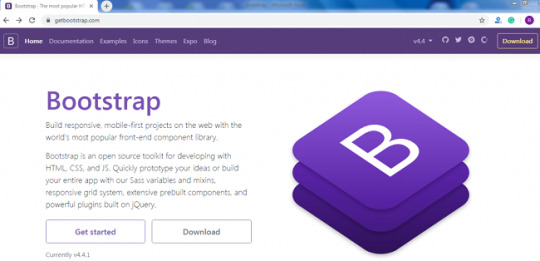
Are you looking to take your web design skills to the next level? Look no further than the Bootstrap 4 Tutorial. In this comprehensive guide, we will delve into the world of Bootstrap 4, the renowned front-end framework. Whether you're a beginner or an experienced developer, this tutorial will equip you with the knowledge and techniques to create visually stunning and responsive websites. Let's dive in!
Bootstrap 4 Tutorial is a treasure trove of information for web designers and developers. It covers everything from the basics to advanced topics, providing a step-by-step approach to mastering Bootstrap 4. With its responsive grid system, pre-built components, and extensive customization options, Bootstrap 4 empowers you to craft visually appealing websites with ease.
The tutorial begins with an overview of the framework, explaining its key features and advantages. It then progresses into the practical aspects, guiding you through the process of setting up Bootstrap 4 in your project. From there, you'll learn how to harness the power of the responsive grid system to create flexible and adaptive layouts.
One of the highlights of Bootstrap 4 is its extensive collection of CSS components, such as navigation bars, buttons, forms, and cards. The tutorial provides detailed explanations and examples of how to utilize these components effectively. Additionally, you'll explore the JavaScript plugins offered by Bootstrap 4, enabling you to enhance the functionality and interactivity of your websites.
In conclusion, the Bootstrap 4 Tutorial is a comprehensive resource that empowers web designers and developers to create visually stunning and responsive websites. With its intuitive approach and extensive coverage of Bootstrap 4's features, this tutorial is a valuable asset for anyone looking to enhance their web design skills. Don't miss out on the opportunity to master Bootstrap 4 and elevate your web development projects to new heights.
To access the Bootstrap 4 Tutorial and embark on your web design journey, visit Tutorial and Example
0 notes
Text
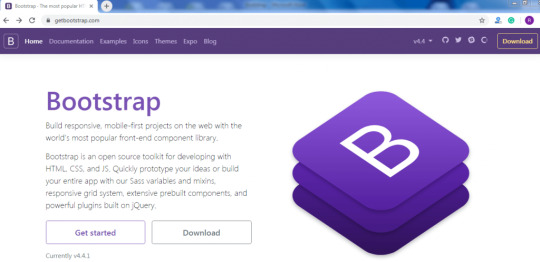
Welcome to the "Bootstrap Tutorial" on TutorialAndExample.com. Whether you're a beginner or an experienced web developer, this comprehensive guide will walk you through the ins and outs of Bootstrap. Learn how to leverage its powerful features and create stunning, responsive websites that captivate your audience.
0 notes
Photo

Responsive website using Bootstrap 4 Complete Tutorial in Divinector Youtube Channel
#create a website#how to create a website#website design#creative website design#html css#bootstrap 4 tutorial#bootstrap 4 for beginners#html5 css3#webdesign#frontenddevelopment#divinector
0 notes
Text
Are You Ready to Begin Your Journey into Web Design? Web Design Beginner Guide
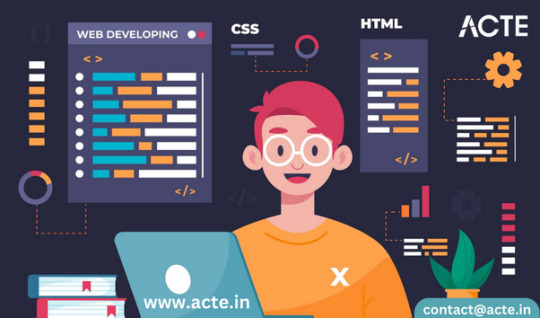
1. Grasping the Basics
Before you dive into crafting visually appealing websites, it’s crucial to have a solid understanding of the foundational elements:
HTML (Hypertext Markup Language): This forms the core of web pages, defining their structure and content.
CSS (Cascading Style Sheets): CSS plays a crucial role in styling and layout, enabling you to control the visual presentation of your web content.
Responsive Design: Learn how to create websites that can adapt seamlessly to various screen sizes, ensuring an optimal user experience on desktops, tablets, and smartphones.
2. Choosing Your Tools
Effective web design relies on having the right software tools at your disposal. Here are some popular choices:
Text Editors: Start with simple text editors like Notepad (for Windows) or TextEdit (for Mac). As you progress, consider transitioning to more advanced code editors such as Visual Studio Code, Sublime Text, or Atom.
Graphics Editors: Adobe Photoshop and Adobe Illustrator are widely used for creating images and graphics. If you’re seeking free alternatives, explore options like GIMP and Inkscape.
3. Mastering HTML and CSS
HTML and CSS serve as the fundamental building blocks of web design. Numerous online resources and courses can aid you in acquiring these skills:
W3Schools: This platform offers interactive tutorials and comprehensive references for both HTML and CSS.
Codecademy: It provides hands-on coding lessons, encompassing HTML and CSS, among other topics.
Coursera and edX: These respected platforms offer web design courses presented by renowned universities and institutions.
YouTube: You’ll find a plethora of video tutorials that cater to HTML and CSS beginners, making learning more engaging.
4. Practice Makes Perfect
While understanding the theory is essential, practical application is equally vital. Begin by creating simple web pages to reinforce your newfound knowledge. Gradually, take on more complex projects. Building a personal website or blog is an excellent way to apply and enhance your skills.
5. Embrace Responsive Web Design
With the proliferation of mobile devices, it’s essential to learn how to design responsive websites. Familiarize yourself with media queries and techniques for adapting your designs to various screen sizes.
6. Proficiency in CSS Layouts
Comprehending CSS layout techniques, including Flexbox and CSS Grid, is crucial for creating well-structured and visually pleasing websites.
7. Explore Web Design Frameworks
Consider using front-end frameworks such as Bootstrap or Foundation. These frameworks offer pre-designed, responsive components that can expedite your web design projects.
8. Grasp UI/UX Design Principles
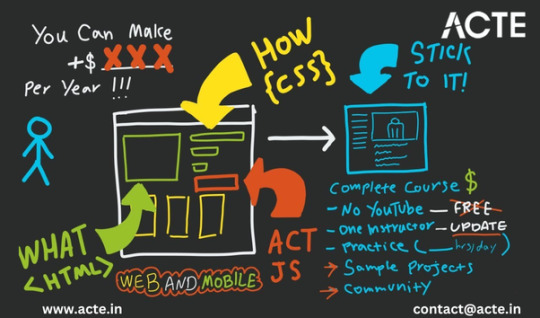
9. Understand Web Hosting and Domains
To make your websites accessible to a global audience, you’ll need web hosting and a domain name. Numerous hosting providers are available, including Bluehost, SiteGround, and HostGator.
10. Explore Content Management Systems (CMS)
For streamlining website creation and management, especially for larger projects, consider using content management systems (CMS) like WordPress, Joomla, or Drupal.
11. Lifelong Learning
Web design is a constantly evolving field. Stay updated with the latest trends, techniques, and technologies by following industry blogs, participating in webinars, and enrolling in advanced courses.
12. Build Your Portfolio
Create a portfolio showcasing your best work. Potential clients or employers will want to see examples of your capabilities.
13. Decide on Freelancing or Employment
Determine whether you want to work as a freelance web designer or seek employment at a design agency or company. Each path offers unique opportunities and challenges.
14. Network with Fellow Designers
Join web design communities, attend meetups, and connect with fellow designers. Collaboration and learning from peers can be highly beneficial.
15. Seek Feedback and Constructive Criticism
Don’t hesitate to request feedback on your work. Constructive criticism can help you grow and improve as a designer.
16. Bring Your Skills to Real Projects
Once you’ve honed your skills, start taking on real web design projects. Whether it’s designing websites for friends, local businesses, or personal ventures, practical experience is invaluable.
17. Find Inspiration
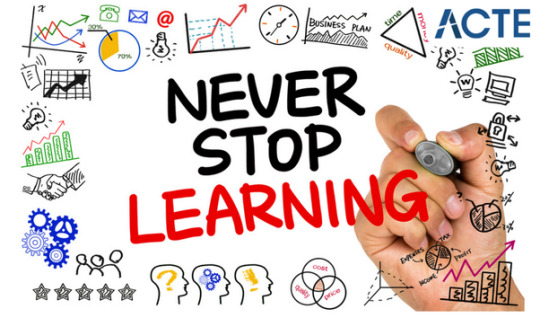
18. Keep Learning
Web design is an ever-evolving field. Stay curious and open to learning new techniques and technologies. Continuous learning will keep your skills sharp and in demand.
19. Consider Professional Training with ACTE Technologies

ACTE Technologies takes pride in its highly skilled trainers, who bring extensive industry experience to the table, ensuring you receive exceptional education and guidance. Moreover, ACTE Technologies frequently facilitates internships and job placements, providing opportunities to apply your web design skills in practical scenarios.
By choosing ACTE Technologies, you’ll not only establish a strong foundation in Web Design Couse but also gain access to a network of professionals and resources that can bolster your career aspirations.
Starting with the fundamentals and progressively advancing your skills is the key to success in web design. Keep in mind that patience and practice are your allies on this journey. As you become more proficient, you’ll possess the creative ability to bring your web design visions to life. So, roll up your sleeves, open your preferred code editor, and let your web design adventure
1 note
·
View note
Video
youtube
Complete e-commerce website design, how to create full responsive websit...
#web design tutorials for beginner#bootstrap#how to create full responsive website html css & bootstrap in banlga tutorials#Complete e-commerce website design#web design tutorials 2020#css3#html5#bootstrap 4#web developer abdul hannan#Web Development Bangla
0 notes